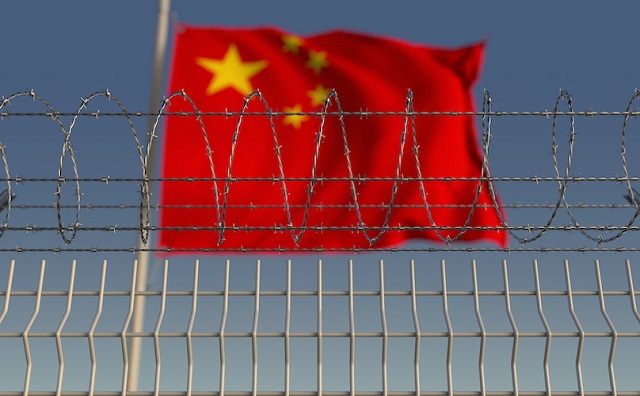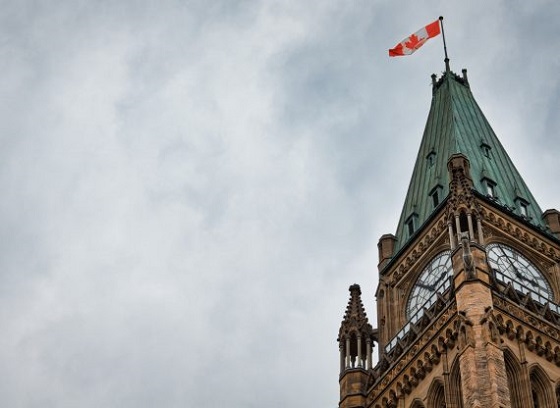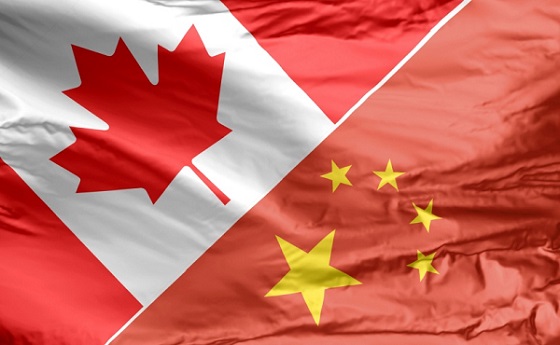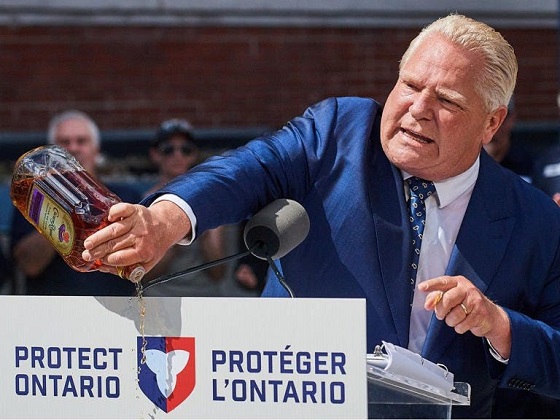Business
US lawmakers accuse Pfizer, Eli Lilly of testing new drugs on prisoners in Communist China

From LifeSiteNews
Two Republicans and two Democrats in the House of Representatives have leveled stunning allegations against two pharmaceutical companies, calling on the U.S. Food and Drug Administration to investigate potential testing of drugs on prisoners of Communist China.
A bipartisan group of Congress members has leveled stunning allegations against pharmaceutical companies Pfizer and Eli Lilly, calling on the U.S. Food & Drug Administration (FDA) to investigate the potential testing of new drugs on prisoners of Communist China.
The letter was sent August 19 to FDA Commissioner Dr. Robert Calf and signed by Select Committee on the Chinese Communist Party (CCP) Chair Rep. John Moolenaar, a Republican from Florida and ranking member and Illinois Democratic Rep. Raja Krishnamoorthi, Health Energy & Commerce Subcommittee ranking member and California Democratic Rep. Anna Eshoo, and Florida Republican Rep. Neal Dunn.
“For over a decade, it appears that U.S. biopharmaceutical companies conducted clinical trials with China’s military organizations, and specifically with medical centers and hospitals affiliated with the People’s Liberation Army’s (PLA), to determine the safety and effectiveness of new drug candidates prior to approval,” the letter reads. “ … we are also concerned that U.S. biopharmaceutical companies have conducted clinical trials with hospital infrastructure located in the Xinjiang Uyghur Autonomous Region (XUAR), where the Chinese Communist Party (CCP) is engaged in genocide of the Uyghur population.”
The lawmakers’ review of publicly available data found that over the last decade major American Pharma companies have conducted “hundreds of clinical trials in China that included at least one entity with PLA in the name as a research trial partner.”
“Even today, one major U.S. biopharmaceutical entity is actively recruiting patients for an advanced Alzheimer drug trial and is partnered with the PLA’s General Hospital and Medical School … and the PLA’s Air Force Medical University. … Previously, another U.S. biopharmaceutical entity used the 307 Hospital of the PLA (307 医院) as the setting for a cancer therapeutic clinical trial.”
Such work not only carries risks of sensitive technology falling into the CCP’s hands, “there are also U.S. biopharmaceutical trials listed on clinicaltrials.gov that were conducted with hospitals located in the XUAR, where credible investigative reports have shown that ethnic minorities in the region are repeatedly forced by the CCP to surrender their body autonomy. As we know, there is simply no ability for firms to conduct due diligence to ensure that clinical trials done in XUAR are voluntary.”
Axios noted that the trials in question concern Pfizer’s kidney cancer drug axitinib (brand name Inlyta), and Eli Lilly’s Alzheimer’s drug donanemab (brand name Kisunla).
The lawmakers asked the FDA to answer several questions related to its knowledge and oversight of such trials and called on the agency to “take on a greater role in protecting U.S. national security interests. With this data, it is clear that the FDA should play a greater role in analyzing U.S. biopharma entities (sic) clinical trial operations in the PRC.”
Pfizer responded that it “is committed to conducting business in an ethical and responsible manner. This includes respecting internationally recognized human rights throughout our operations,” Straight News reported. Eli Lilly claimed that it is “committed to IP protections, and we conduct robust assessments of our partners to ensure they meet Lilly standards for research and data privacy. Further, we oversee their activities when conducting clinical trials to ensure quality and data integrity.”
The allegations come amid a strained public reputation for Big Pharma given its role in the COVID-19 pandemic response.
A large body of evidence has found that mass restrictions on personal and economic activity undertaken in 2020 and part of 2021 caused far more harm than good in terms of personal freedom and economics as well as public health, particularly through the controversial COVID vaccines rushed through development by Pfizer, Moderna, Johnson & Johnson, and the Trump administration.
Yet, so far Big Pharma has largely escaped accountability thanks to the federal Public Readiness and Emergency Preparedness (PREP) Act of 2005. According to the Congressional Research Service (CRS), the PREP Act empowers the federal government to “limit legal liability for losses relating to the administration of medical countermeasures such as diagnostics, treatments, and vaccines.” Near the beginning of the 2020 COVID-19 outbreak, the Trump administration invoked the Act in declaring the virus a “public health emergency.”
Under this “sweeping” immunity, CRS explained, the federal government, state governments, “manufacturers and distributors of covered countermeasures,” and licensed or otherwise-authorized health professionals distributing those countermeasures are shielded from “all claims of loss” stemming from those countermeasures, with the exception of “death or serious physical injury” brought about through “willful misconduct,” a standard that, among other hurdles, requires the offender to have acted “intentionally to achieve a wrongful purpose.”
A handful of states are currently making efforts to hold Pharma companies accountable despite this hurdle, such as Florida’s ongoing grand jury investigation into the vaccines’ manufacturers, and a Kansas lawsuit accusing Pfizer of misrepresentation for calling the shots “safe and effective.”
Business
Budget 2025 continues to balloon spending and debt

The Canadian Taxpayers Federation is criticizing Prime Minister Mark Carney for ballooning spending and debt in Budget 2025.
“Budget 2025 shows the debt continues to spiral out of control because spending continues to spiral out of control,” said Franco Terrazzano, CTF Federal Director. “Carney needs to reverse course to get debt and spending under control because every dollar Canadians pay in federal sales tax is already going to pay interest charges on the debt.
“Carney isn’t close to balancing anything when he’s borrowing tens of billions of dollars every year.”
The federal deficit will increase significantly this year to $78.3 billion. There is no plan to balance the budget and stop borrowing money. The federal debt will reach $1.35 trillion by the end of this year.
Debt interest charges will cost taxpayers $55.6 billion this year, which is more than the federal government will send to the provinces in health transfers ($54.7 billion) or collect through the GST ($54.4 billion).
Budget 2025 increases spending by $38 billion this year to $581 billion. Despite promises to control spending in future years, Budget 2025 projects that overall spending will continue to rise by billions every year.
“Canadians don’t need another plan to create a plan to meet about cutting spending, Canadians need real spending cuts now,” Terrazzano said. “The government always tells Canadians that it will go on a diet Monday, but Monday never comes.
“And the government isn’t really finding savings if it’s planning to keep increasing spending every year.”
Budget 2025 commits to “strengthening” the industrial carbon tax and “setting a multi-decade industrial carbon price trajectory that targets net zero by 2050.”
“Carney’s hidden carbon tax will make it harder for Canadian businesses to compete and will push Canadian entrepreneurs to set up shop south of the border,” Terrazzano said. “Carney should scrap all carbon taxes, cut spending and stop taking so much money from taxpayers.”
Business
Federal budget: Carney government posts largest deficit in Canadian history outside pandemic

-
Federal deficit projected to exceed $78 billion
-
This is Ottawa’s tenth consecutive unbalanced budget
-
Every newborn baby in Canada now enters the world with a debt of more than $33,000.
Repackaging record spending as “investments” while offering no credible path back to balance is the opposite of responsible fiscal stewardship, asserts the MEI in response to the tabling of the federal budget this afternoon.
“Canadians should find a deficit this large extremely troubling,” says Emmanuelle B. Faubert, economist at the MEI. “The attempt to disguise it under a new wave of so-called investments makes it even more concerning.
“It’s one thing to spend money you don’t have; it’s yet another to shirk responsibility for it.”
The Carney government is projecting a deficit of $78.3 billion for 2025-2026, up from $48.3 billion last year.
Interest payments are projected to rise to $55.6 billion this upcoming fiscal year, but servicing the debt will mount rapidly: to $76.1 billion by 2030, a 37 per cent spike.
Current debt charges cost taxpayers more than federal healthcare transfers to provinces, which amount to $54 billion annually.
This budget deficit would bring the national debt to $1.48 trillion, and mark the tenth consecutive year without a balanced federal budget. Every newborn baby in Canada now enters the world with a debt of more than $33,000.
Much of the new spending is categorized as capital as opposed to operational, which is a new reclassification scheme unveiled by the Carney government that does nothing to change the total debt. The government’s net debt is predicted to grow by another 21 per cent by 2030, to $1.79 trillion.
The Build Canada Homes program, for one, has an initial $13-billion price tag. The MEI studied a similar program launched in New Zealand, which accomplished just 3 per cent of its total objective.
The MEI warns that this marks a shift toward increased central planning, with Canada becoming an economy where politicians, instead of businesses and consumers, decide which industries succeed.
Overtures in the budget hint at a possible future walk-back of the emissions cap, which the think tank has strongly advocated for. In March, the PBO released a report estimating that the emissions cap would reduce our collective prosperity by $20.5 billion in 2032 and result in 40,300 fewer jobs than there would otherwise be.
A clearer path toward shrinking the federal bureaucracy has been laid out, with the government planning to eliminate 16,000 full-time positions, representing 4.5 per cent of the workforce as of March 2025.
Economist Emmanuelle B. Faubert would like the government to go further. While Ottawa plans to maintain the size of the federal bureaucracy at about 330,000 employees by 2028-29 through attrition, the MEI sees this as insufficient, and urged a more ambitious approach in its pre-budget submission.
The MEI recommended cutting the federal workforce by 17.4 per cent, mirroring the Chrétien-era reductions of the 1990s, which would eliminate roughly 64,000 positions and save taxpayers $10 billion annually.
The MEI welcomes the decision to expand capital cost allowances, letting businesses write off new machinery and equipment more quickly. This measure promotes investment and productivity by reducing the upfront cost of doing business.
“The government may try to rebrand its debt, but Canadians will still be the ones paying it off for decades,” says Ms. Faubert. “Carney calls it a generational budget, and he’s right, but only because future generations will be stuck footing the bill.”
* * *
The MEI is an independent public policy think tank with offices in Montreal, Ottawa, and Calgary. Through its publications, media appearances, and advisory services to policymakers, the MEI stimulates public policy debate and reforms based on sound economics and entrepreneurship.
-

 International2 days ago
International2 days agoNigeria better stop killing Christians — or America’s coming “guns-a-blazing”
-

 Justice2 days ago
Justice2 days agoA Justice System That Hates Punishment Can’t Protect the Innocent
-

 Alberta1 day ago
Alberta1 day agoCanada’s heavy oil finds new fans as global demand rises
-

 Business23 hours ago
Business23 hours agoTrump’s Tariffs Have Not Caused Economy To Collapse
-

 Daily Caller22 hours ago
Daily Caller22 hours agoTrump Reportedly Planning Ground Troops, Drone Strikes On Cartels In Mexico
-

 Alberta15 hours ago
Alberta15 hours agoAlberta government’s plan will improve access to MRIs and CT scans
-

 Bruce Dowbiggin1 day ago
Bruce Dowbiggin1 day agoA Story So Good Not Even The Elbows Up Crew Could Ruin It
-

 Addictions1 day ago
Addictions1 day agoThe War on Commonsense Nicotine Regulation












